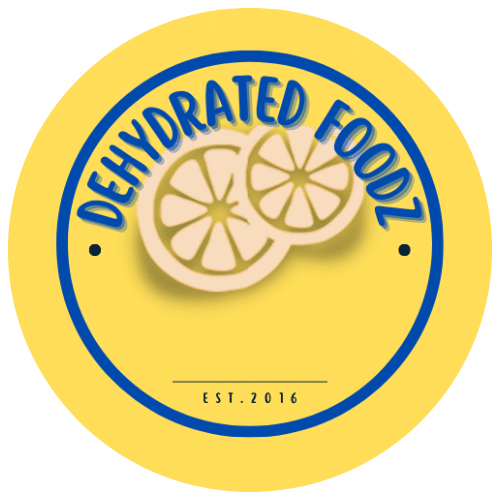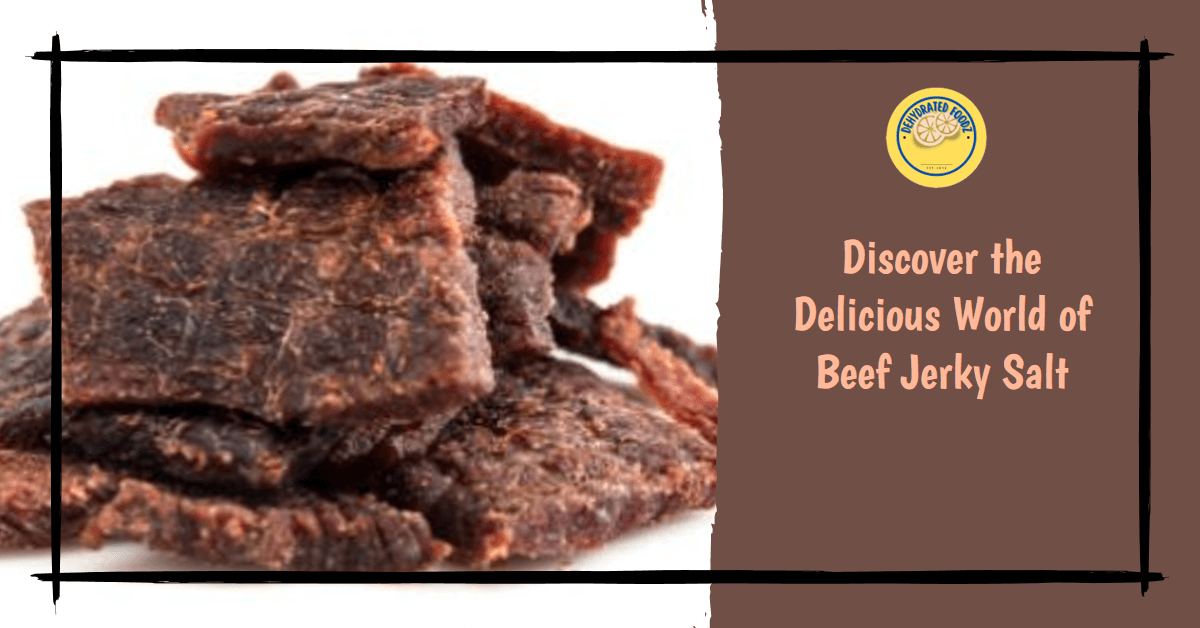Beef jerky salt is transforming the way we think about snacking, seasoning, and healthful culinary practices. With its growing popularity, it’s time to delve deep into the world of this savory marvel. Food enthusiasts and health-conscious consumers alike are turning to beef jerky salt for diverse reasons – from its rich, complex flavors to its nutritional profile.
Understanding Beef Jerky Salt
This is more than just regular salt – it’s the cornerstone of creating delectable jerky recipes. It’s a specialized blend designed specifically for curing meats. Unlike common table salt, which consists mainly of sodium chloride, this method often includes a mix of salts, spices, and curing agents such as sodium nitrate or sodium nitrite.
What sets this beef salt apart is its ability to enhance the flavor of meat while also ensuring food safety during the drying process. This meticulous blend not only contributes to the taste but also extends the shelf life of the finished jerky, warding off spoilage and foodborne illnesses.
Nutritionally, one must be aware of their sodium intake when using the jerky salt. Its composition may vary between brands, and thus, it’s important to consider the recommended daily allowances and the potential health risks that could arise from excessive consumption of sodium.
Health Benefits of Jerky Salt
When applied to lean cuts of meat, beef jerky salt contributes to creating a high protein, low-fat snack. Jerky prepared with this special salt is an excellent source of essential minerals and can be a fitting complement to a health-conscious diet. However, moderation is key due to the added sodium content inherent in any cured product.
The protein in beef jerky provides vital amino acids necessary for muscle repair and maintenance, making it an ideal snack for active individuals. Meanwhile, due to the preservation process, the fat and carbohydrate content remains low, further positioning beef jerky as a healthy snack option.
Flavor Varieties and Seasonings
The variety of brands available in the market today is vast and diverse. From traditional flavors enhanced with garlic powder and ground black pepper to gourmet blends sporting Himalayan pink salt or liquid smoke, there’s no shortage of taste profiles to explore.
Some popular combinations may include spices like onion powder, and paprika, or even exotic additions like celery juice powder, which can contribute both flavor and additional curing properties. Unique options might consist of global spice blends that offer a twist to the traditional jerky flavor palette.
Incorporating Beef Jerky Salt in Recipes
Beef jerky salt isn’t limited to making jerky. It can be a revolutionary ingredient in a variety of dishes. Its robust flavor can enhance the profiles of sauces, and marinades, and even lend a smoky, savory note to dry rubs.
Creative cooking methods may see beef jerky salt used in unconventional ways, such as seasoning for roasted vegetables or a flavor booster for homemade soups. Those who are passionate about culinary arts can experiment with this seasoning to add umami and depth to an array of creations.
Choosing the Best Beef Jerky Salt
As with any ingredient, quality is paramount. Factors to consider when selecting the best beef jerky salt include the freshness and purity of the ingredients, the reputation of the brand, and the presence of any undesirable additives.
Recommended brands are those that boast transparency regarding the sourcing and composition of their products. Customers are encouraged to investigate the ingredients list and, if possible, opt for options free from unnecessary fillers or artificial preservatives.
Jerky Cure Wards Off Bacteria
Learned in the ways of traditional curing and passionate about modern techniques, the savvy jerky enthusiast continually seeks out ways to improve safety and flavor. To this end, let’s delve deeper into the role of jerky cure as a guardian against microbial threats. The curing agents typically include sodium nitrite and sodium nitrate—compounds that not only combat bacteria but also fix the meat’s color, adding to the visual appeal of the final product. Moreover, the right balance of these salts contributes to a stable shelf life, keeping your jerky fresh and edible for longer.
Balancing the curing agents with other seasonings is paramount. The cure ratio should adhere to established guidelines, typically found within the curing salt packet instructions or reliable culinary sources. Exceeding recommended proportions can yield an overwhelmingly salty product or, worse, lead to health issues. Conversely, insufficient curing agents can compromise the safety of the jerky. It’s a delicate balance, but get it right, and you’ll have jerky that’s as safe as it is mouthwateringly irresistible.
How to Cure Jerky: Tips and Techniques for Delicious Results
Curing jerky is both an art and a science, requiring a precise balance of ingredients, temperature control, and timing to achieve the perfect texture and taste. Before beginning the curing process, it’s imperative to select quality cuts of meat—typically lean beef, such as top round or flank steak, to ensure a better end product. Trim away any fat, as it can cause the jerky to spoil faster.
To cure the meat, start by evenly applying your chosen beef jerky salt blend. Using a non-reactive container, lay the meat strips and cover them with your seasoning, ensuring full and uniform contact. It’s this curing stage that kick-starts the dehydration process by drawing out moisture—a critical step that not only flavors the meat but also inhibits bacterial growth. For optimal results, it is recommended to cure stripped meat for 24 hours and ground meat for 12 hours. It’s important to avoid over-curing, as it can result in excessive saltiness.
As you prepare to dehydrate the meat, remember that consistent airflow and a steady temperature range between 130°F to 160°F (54°C to 71°C) are vital. Commercial food dehydrators offer the convenience of controlled settings and can efficiently remove water from large batches of jerky. Ensuring that each strip of meat is spaced properly allows for even dehydration, a fundamental aspect of creating excellent jerky.
It is crucial to adhere to the U.S. Department of Agriculture’s recommendations on meat preparation, especially when the end product will be stored at room temperature. A common recommendation is to heat the meat to an internal temperature of 160°F (71°C) before the dehydrating process to kill any bacteria. After dehydration, finishing jerky in an oven, if required, can ensure this safety standard is met.
Finally, once the jerky is properly dehydrated, which can take several hours depending on thickness and moisture content, it needs to be stored correctly. Use airtight containers or vacuum-sealed bags to extend shelf life and maintain freshness. Monitor the jerky for any signs of spoilage before consumption, especially if you’re experimenting with different curing times and temperatures.
Through careful attention to these steps and a willingness to refine your technique, you can produce beef jerky that not only tastes great but is also safe to enjoy. Whether for personal indulgence or as part of a business venture in artisanal food production, mastering the intricacies of jerky-making can be a rewarding and flavorful journey.
Conclusion
The landscape of this jerky salt is a testament to the adaptability and ingenuity of flavor craft. It presents a promising vista for health aficionados and flavor chasers alike. This granular powerhouse stands ready to elevate your jerky-making, invigorate your recipes, and support your health-conscious endeavors.
Whether venturing into homemade jerky for the first time or spicing up a tried-and-true dish, beef jerky salt is a pantry essential. I encourage you to dive into the flavorful world of beef jerky salt, discover its myriad uses, and revel in the rich tapestry of tastes it can bring to your table
Frequently Asked Questions
Is a cure necessary when making jerky?
Absolutely! When it comes to making jerky, using a curing solution is not just a flavor enhancer – it’s a safety requirement. The curing process involves using a specific blend of salt, seasonings, and curing agents like sodium nitrite to prevent the growth of bacteria such as Salmonella and E. coli during the drying process. This is particularly important since jerky is often stored for long periods at room temperature. The cure works by creating an environment that is inhospitable to these bacteria, ensuring that your jerky is not only delicious but also safe to eat. Always follow tried-and-true recipes and adhere to USDA guidelines to guarantee the safety of your homemade jerky.
Are Curing Salts for Jerky Safe?
There is no evidence to suggest that curing salt is harmful. Numerous scientific studies have extensively evaluated sodium nitrite, consistently demonstrating its ability to effectively reduce bacterial growth and prevent bacterial growth when used correctly. In fact, a recent study conducted by the National Toxicology Program confirms the safety of sodium nitrite within recommended doses.
However, it is worth noting that there has been growing controversy surrounding cure salts, particularly sodium nitrate.
Can beef jerky be made without curing salt?
Using unsalted beef jerky is acceptable, provided it is properly cooked and does not require additional treatment. This approach can be seen as a health-conscious policy, serving as a preventive measure against bacterial growth resulting from inadequate cooking methods.

